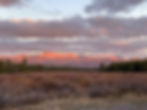Custer Gallatin National Forest, Montana South Plateau Project
- Climate Forests
- Nov 8, 2022
- 2 min read

South Plateau Project Area, Custer Gallatin National Forest
Photo credit: Nancy Schultz
Why this forest is special
The Custer Gallatin National Forest abuts the western and northern boundary of Yellowstone National Park and part of the 34,000-square-mile Greater Yellowstone Ecosystem, one of the wildest places in the lower 48 states and one of the largest nearly intact temperate-zone ecosystems on Earth. The Custer Gallatin include seven mountain ranges, 4,000 miles of rivers and streams, and a landscape that forms an important connective corridor for wildlife moving between Yellowstone National Park and the Northern Rockies. Wolves, grizzly and black bears, lynx, moose, pronghorn, elk, bighorn sheep, bison and wolverines live here.
South Plateau Landscape Area Treatment Project
The project will clearcut more than 5,500 acres of mature lodgepole pine, most of the trees 90 years and older, across lands near the western boundary of Yellowstone National Park. The 15-year project proposes hundreds of clearcuts, each potentially as large as 30 football fields, and up to 57 miles of new logging roads. Up to 6,600 acres of mature lodgepole could also be thinned, which could include bulldozing roads through old-growth lodgepole pine stands.
Carbon storage and biodiversity
This area is important habitat for grizzly bears, lynx, moose and elk. The animals rely on these older forests for cover, including in hunting seasons. And they use these lands to move between habitats in this wild landscape. The project will remove the largest trees across thousands of acres that would otherwise remain standing and continue to store carbon. Road construction will disturb soils that perform a similar function.
Why these trees must keep standing
The project would destroy and fragment habitat for lynx and grizzly bears, both listed as threatened under the Endangered Species Act, and increase the potential for poaching and other harmful human-bear interactions. That’s why the Forest Service’s own analysis found that 15 years of extensive road construction and logging are “likely to adversely affect” imperiled grizzlies and lynx. More than 14,000 acres of hiding cover for elk and half of important winter habitat for moose will be logged. The Forest Service justifies the project by claiming it will reduce fire severity and insect outbreaks, but lodgepole pines can live up to 300 years, all while storing and absorbing carbon. Most of the logging will occur far from communities or structures.
The future of mature and old-growth trees in Custer Gallatin National Forest
The 2022 Custer Gallatin forest plan contains no protection for mature forests and allows unlimited logging of old-growth lodgepole pine. The national forest south of the Custer Gallatin, the Targhee, has an infamous history of clearcutting right up to the boundary of Yellowstone National Park, a contrast that was visible from space. The South Plateau project could continue in that regrettable tradition.
Project status
The Forest Service proposed the project in 2020, then withdrew it. It issued a revised environmental assessment in October 2022. The Biden administration could approve the project in the coming months.
Local contact: Mike Garrity, Alliance for the Wild Rockies, Helena, Mont., (406) 459-5936, wildrockies@gmail.com